Section G: Channel Vegetation Types
SECTION G: CHANNEL VEGETATION TYPES

To be assessed within a 10m wide transect across the channel at each spot-check (see figure below).
Channel vegetation types are recorded in categories that assess the habitat structure they provide at the time of survey, not their morphological character described in textbooks. The purpose is to provide information on the range of functional habitats that channel vegetation may be providing for invertebrates and other animals. This is especially important in rivers with otherwise limited structural diversity.
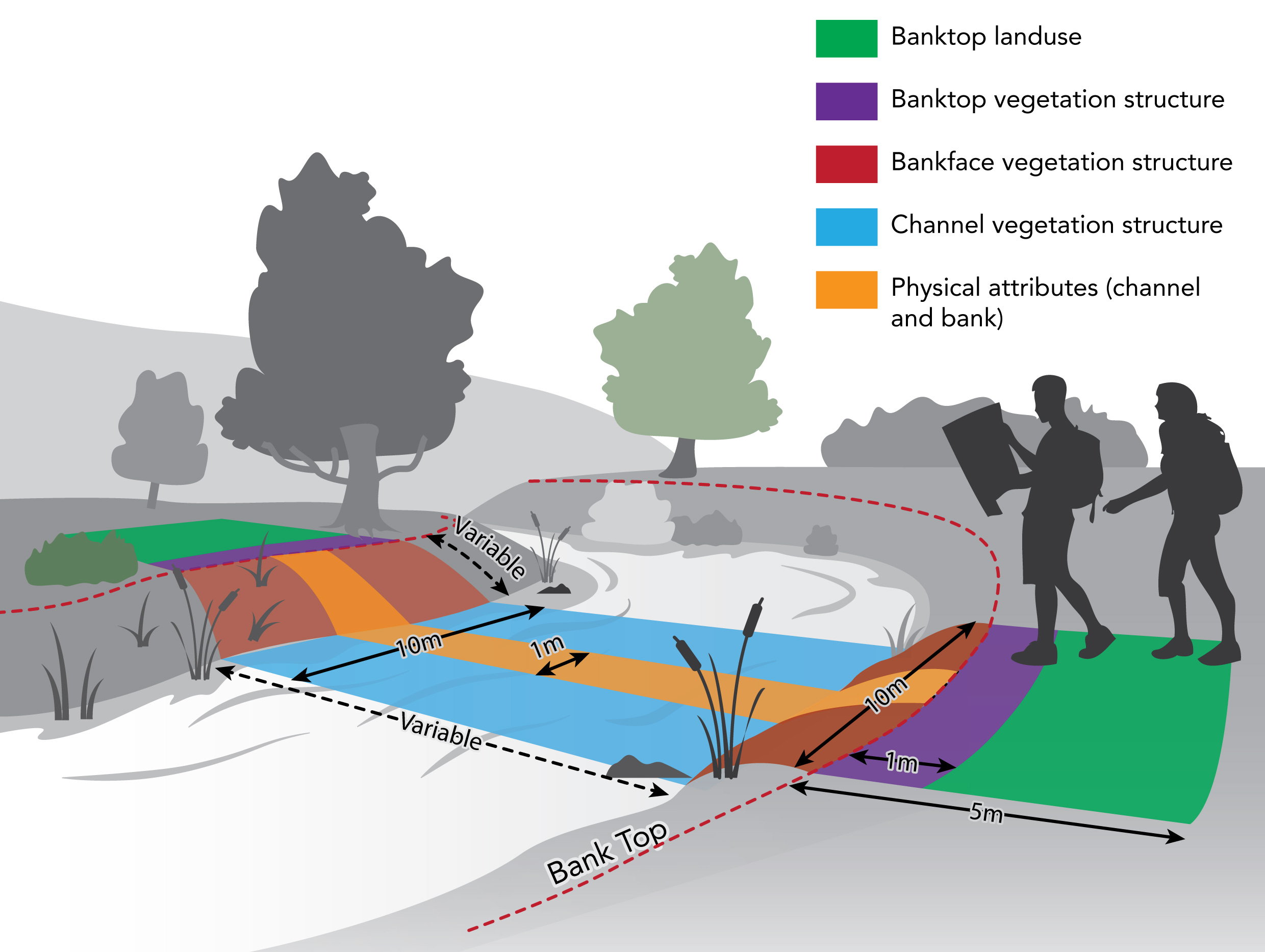
None/Not visible
If <1% vegetation cover, or none is visible, even though water clarity is good, enter ✓ in this box. When the bed of the channel is not visible (e.g. when enclosed in a culvert) also enter ‘NV’. Also enter ‘NV’ if the water is too turbid to determine submerged plant cover, even though entries for emergent, amphibious and floating forms can be made if present.
Overall assessment: end column
On the far right of the table is the end column - a catch all for vegetation. Note that this column is not the sum of the spot checks, it includes the areas outside the spot checks too. This is illustrated in the graphic below (spot check areas across the 500m reach are shown by dotted boxes). Three different vegetation types are illustrated by the symbols. Summing just the spot check areas in the catch all column would identify two of the vegetation types but the third (tear drop symbol) would be missed as it lies completely outside the spot check areas surveyed.
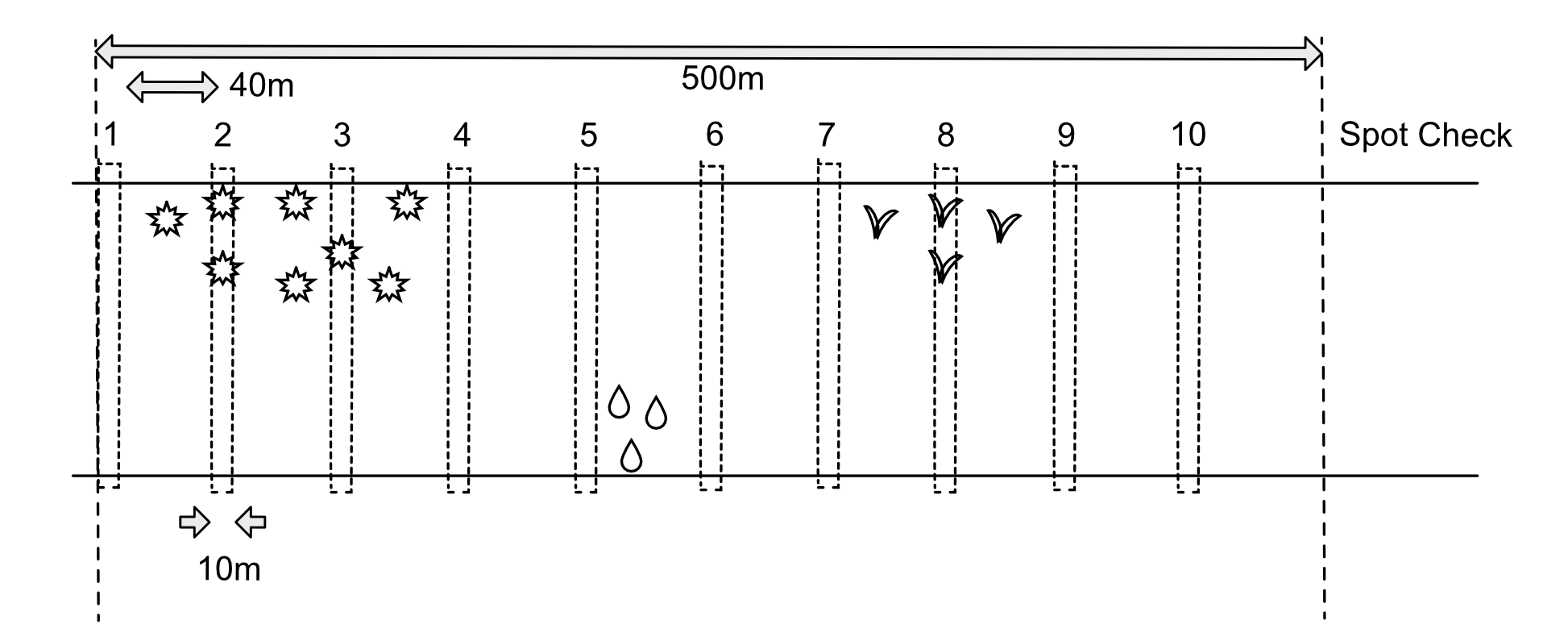
Liverworts/mosses/lichens
Aquatic liverworts (e.g. Scapania), mosses (e.g. Fontinalis) and lichens (e.g. Collema). Includes vegetation that is submerged, or in the splash zone.
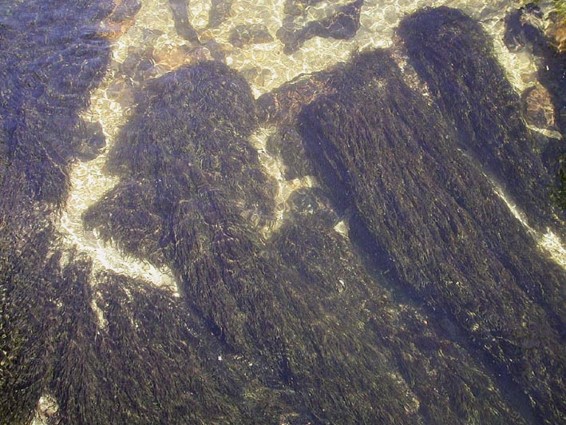
Example of liverworts/mosses/lichens in river
Emergent broad-leaved herbs
Broad-leaved plants rooted on the river bed or along the water’s edge. Leaves and flowers grow above water level e.g. fool’s water-cress (Apium nodiflorum) and water-speedwell (Veronica spp.).
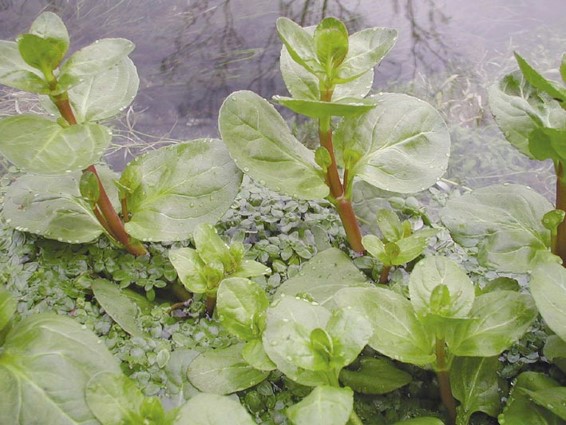
Emergent broad-leaved herbs
Emergent reeds/sedges/rushes/grasses/horsetails
Narrow-leaved monocotyledons (e.g. reeds, sedges, rushes, grasses and horsetails) rooted below water-level or along the water’s edge. Examples include branched bur-reed (Sparganium erectum), reedmace (Typha), common/Norfolk reed (Phragmites australis), sedges (Carex spp.), rushes (Juncus spp.) bulrush (Schoenoplectus spp.), reed sweet-grass (Glyceria maxima) and water horsetail (Equisetum fluviatile).
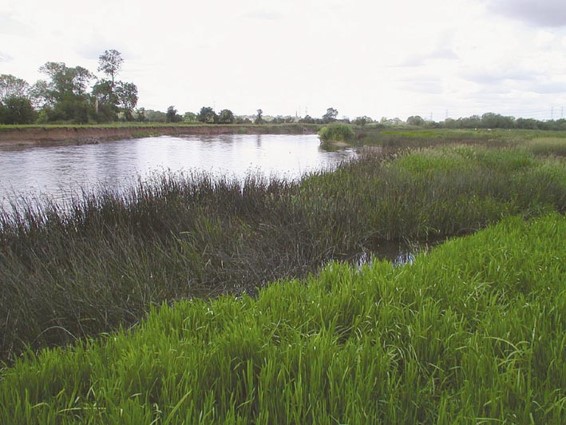
Emergent reeds/sedges/rushes/grasses/horsetails
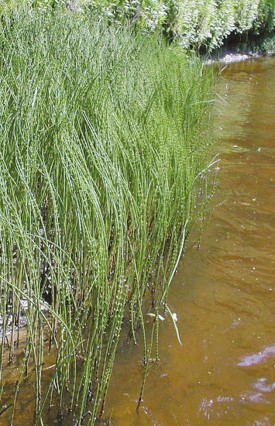
Emergent reeds/sedges/rushes/grasses/horsetails
Floating-leaved (rooted)
Plants rooted on the river bed but with either broad floating leaves such as yellow water-lily (Nuphar lutea) and broad-leaved pondweed (Potamogeton natans); or linear floating leaves such as those produced by unbranched bur-reed (Sparganium emersum).
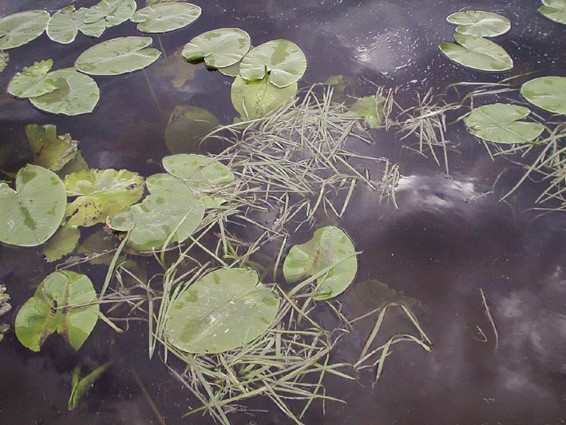
Floating-leaved (rooted)
Free-floating
Plants floating on, or just under, the water surface, and not rooted to the river bed. Examples include duckweeds (Lemna spp.), frogbit (Hydrocharis morsus-ranae), hornwort (Ceratophyllum spp.) and water soldier (Stratiotes aloides).
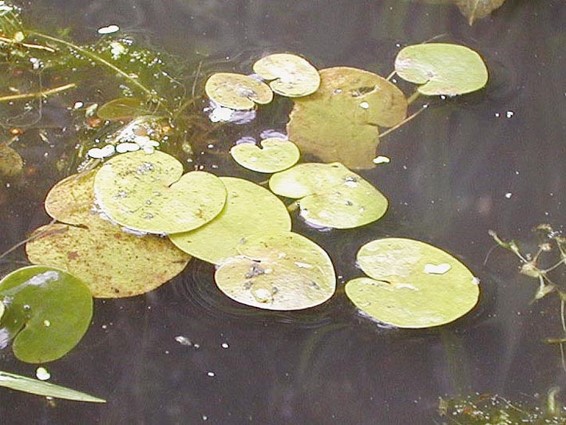
Free floating vegetation
Amphibious
Plants rooted at the edge of the river, or on the bank, but shoots or leaves trail across the water. Examples include amphibious bistort (Persicaria amphibia), creeping bent-grass (Agrostis stolonifera), floating sweet- grass (Glyceria fluitans), marsh foxtail (Alopecurus geniculatus), and water forget-me-not (Myosotis scorpioides).
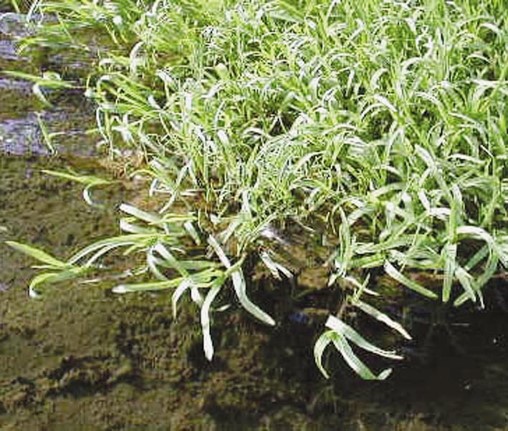
Amphibious Vegetation
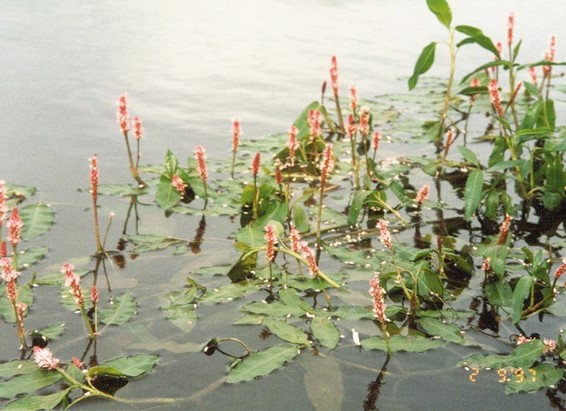
Amphibious Vegetation
Submerged broad-leaved
Rooted submerged plants with underwater leaves no more than four times longer than broad. Some part of the plant, or some leaves, may reach the surface but the majority are submerged. Includes submerged ‘cabbage-like’ leaves of yellow water-lily (Nuphar lutea), perfoliate and several other broad-leaved pondweeds (Potamogeton perfoliatus, P. lucens, P. alpinus), Canadian pondweed (Elodea canadensis), and starworts (Callitriche spp.).
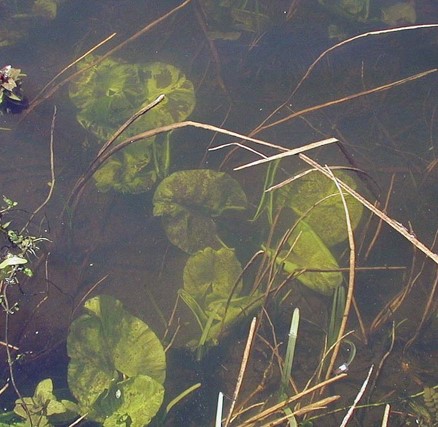
Submerged Broad-leaved Vegetation
Submerged linear-leaved
Rooted, submerged plants with narrow, unbranched, laminar leaves (blade/strap/belt-shaped) that are either totally submerged or just have their tips or upper parts floating on the surface. The most typical examples are unbranched bur-reed (Sparganium emersum), the underwater leaves of arrowhead (Sagittaria sagittifolia), bulrush (Schoenoplectus spp.), and flowering rush (Butomus umbellatus).
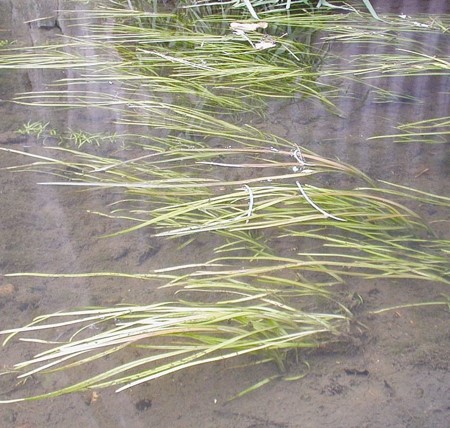
Submerged Linear-leaved Vegetation
Submerged fine-leaved
Rooted submerged plants with fine, branched, leaves. Examples include the feathery leaves of water milfoil (Myriophyllum spp.) and the longer ‘shoe-lace’ appearance of some water-crowfoot species (Ranunculus spp.) and fennel pondweed (Potamogeton pectinatus).
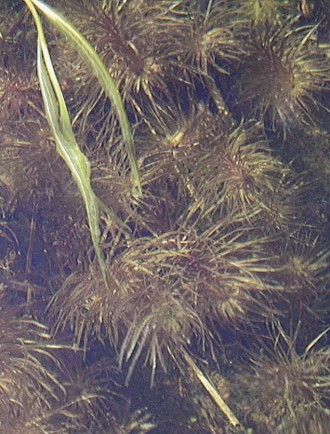
Submerged Fine-leaved Vegetation
Filamentous algae
Blanketweed (Cladophora), mole pelt (Vaucheria) and other obvious filamentous algal growths (e.g. Enteromorpha). Do not record diatom films that occur alone, or coating aquatic plants or stones.
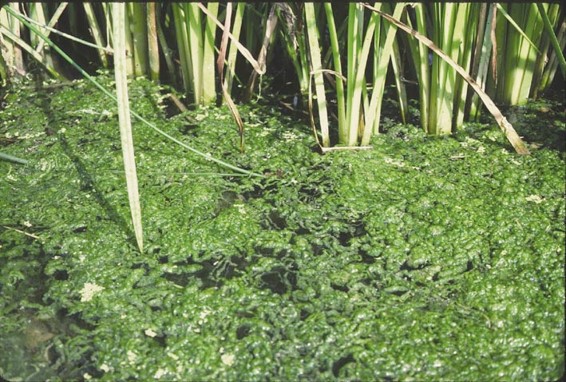
Filamentous Algae